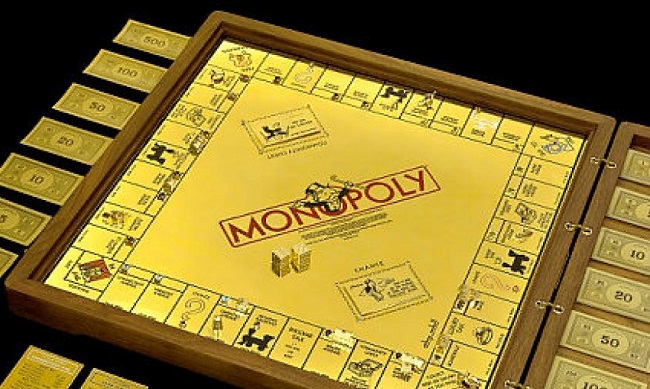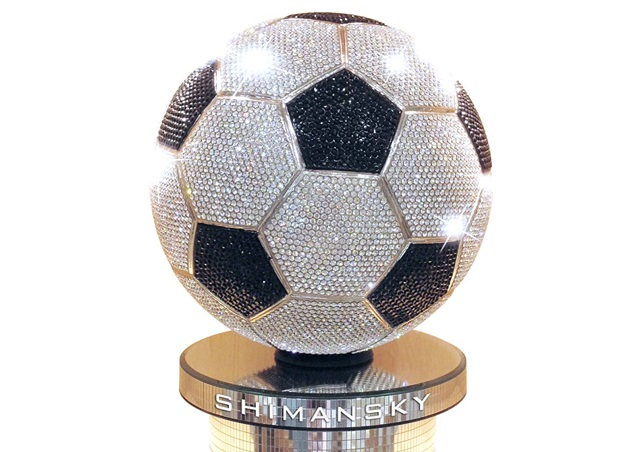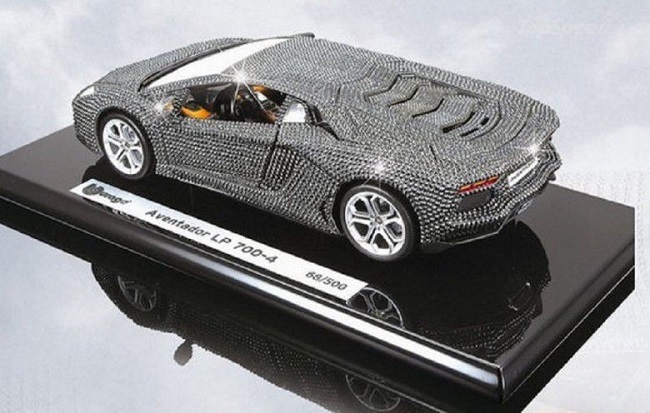On 24 July 1847, Margarete was born in Giengen, near Ulm, Germany, the third of four children. Her father was a master builder, Friedrich Steiff, her mother Maria Margarete Steiff, née Hähnle. When Margarete was 18 months old, she suffered a high fever and as a result her legs became paralysed and it was steiff toys to use her right arm. Three years later, a doctor in Ulm diagnosed her with polio. Many attempted cures and doctor visits were all in vain and her parents begin to despair. Full of zest for life, Margarete fought to lead a normal life. She was taken to school in a handcart by her siblings and neighbouring children. A woman living near the school carried her up into the classroom every day.
In spite of the pain in her right hand, Margarete also took sewing lessons, initially against her father’s wishes. At 17, she finally completed her training as a seamstress. Margarete’s elder sisters – Marie and Pauline – opened a dressmaker’s shop in which Margarete worked part-time. When Marie and Pauline left their home town some 8 years later, Margarete continued on her own. Margarete’s father converted the family home and set up a workroom for her – a small dressmaking workshop.
From her first earnings, Margarete bought a sewing machine of her own. Because the flywheel on the right-hand side was difficult for Margarete to operate, she had the ingenious idea of simply turning the machine around. Adolf Glatz, her cousin’s husband, advised her to go into business on her own. Margarete opened a ready-to-wear felt clothing business to sell clothing and household articles she made herself. Before long, she was able to take on several seamstresses. In an issue of a magazine called “Modenwelt” dated 8th December, Margarete saw a pattern for a small elephant made of fabric. Based on this design, she sewed a pincushion shaped like a small elephant, the “Elefäntle”.
Soon the small fabric animals proved to be very popular – as toys for children. The official date of foundation of Margarete Steiff GmbH. The “Elefäntle” developed into the company’s first big-selling product. Her younger brother, Fritz, successfully sold the felt elephants at the nearby Heidenheim market. Six years later, Margarete had sold over 5,000 elephants. At this point, Margarete also designed other fabric animals. Margarete’s brother Fritz built his disabled sister a house with a suitably equipped living area on the first floor and a small shop on the ground floor.
Today, the street in which this house is found is called “Margarete-Steiff-Strasse”. The first illustrated Steiff catalogue appeared, showing the wide range of products available. The original elephants were joined by monkeys, donkeys, horses, camels, pigs, mice, dogs, cats, rabbits and giraffes. The catalogue also reflected Margarete’s motto: “Only the best is good enough for children”. The toys were showcased for the first time at the Leipzig Toy Fair. Margarete now had a workforce of four seamstresses and ten outworkers. Richard Steiff, Margarete’s favourite nephew, joined the company.
Richard studied at the School of Art in Stuttgart as well as studying in England. Richard designed “Bear 55 PB”, the world’s first toy bear with jointed arms and legs. While looking for a suitable material for the fur, Richard found the cuddly and dyeable mohair plush, manufactured by the Schulte pile-fabric weaving mill in Duisburg. Margarete herself was rather sceptical, but allowed Richard to present his bear at the Leipzig Toy Fair. The breakthrough came when an American businessman discovered the bear and placed an order for 3,000. The bear enjoyed unprecedented levels of sales in the USA, where, from 1906 onwards, it is sold under the name “Teddy bear” – after the US President Theodore “Teddy” Roosevelt. The trademark “Steiff – Button in Ear” was developed by another of Margarete’s nephews, Franz Steiff.
The aim of this trademark was to fend off the vast numbers of cheap imitations and to make the company’s own high-quality products unmistakable. Margarete won the Grand Prix at the World Exhibition in St. Founding of Margarete Steiff GmbH – the name under which the company still trades. 974,000 Teddy bears were produced by 400 staff and 1,800 outworkers – making a total of approximately 1,700,000 toys. The product range was constantly expanded. Margarete Steiff died of pneumonia at the age of 61. A hard blow for the whole Steiff family, her friends and her employees.
Margarete’s nephews took over the running of the company and people all over the world have been keeping her flame alive ever since. Steiff won the Grand Prix at the World Exhibition in Brussels, captivating onlookers with a variety of rag dolls and soft toys. The “Steiff Circus” used mechanically moving figures for the first time. Four years later came the “Noah’s Ark”, one of the most successful showpieces ever. During the tough war and post-war years, Steiff had to adapt its product range accordingly, with substitute fabric being used to a great extent. A kind of cellulose material was used for what became known as the “paper Teddy bear”.
Furthermore, toys made of domestic woods were included in the product range. The advent of the Golden Twenties brought about a revival in demand for fabric and plush. Steiff introduced production lines to cope with the high demand, above all for its toy dogs. Molly the Steiff dog proved to be irresistible and over half a million were sold by 1932. The company resumed production after the end of the Second World War. A mere 12 months later, Steiff has a workforce of almost 1,000, a figure which is to double five years later. Mecki, the hedgehog mascot of German TV magazine Hörzu and a figure from the Diehl Brothers’ puppet films, was produced under licence by Steiff in the form of a doll. The Mecki doll quickly became a top seller the world over.
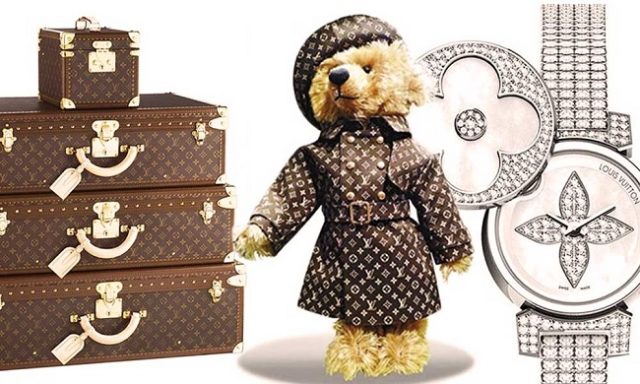
The Teddy bear celebrates its 50th birthday. The “Jackie” anniversary bear was presented with a whole new design – as a cute baby bear with a hint of a navel. The Margarete Steiff Museum – predecessor of today’s “Die Welt von Steiff” Adventure Museum – opened in Giengen to mark the 100th anniversary of the company. At this time, Steiff also began producing limited numbers of replicas for Steiff enthusiasts. A firm favourite with the young, Petsy captureed the market and the hearts of Steiff enthusiasts around the globe. On 1 April, the Steiff Club was founded as an organisation for enthusiasts and collectors of Steiff animals.
With exclusive Club benefits and Club editions. To celebrate the 125th anniversary of the company, the new Steiff Adventure Museum “Die Welt von Steiff” opened its doors for the first time. Steiff has created more than 20,000 different animals over the last 125 years. The crowning glory of the museum is the extremely valuable 125 Karat Teddy bear edition. For the very first time, the Steiff Summer event was held on the company grounds in Giengen – a giant summer party for Steiff enthusiasts and families with lots of exciting attractions and a promise of fun for guests of all ages. A password will be e-mailed to you. There is no doubt at all that toys are a good and essential part of children’s upbringing.
Growing up, kids are often gifted with toys because these toys help to develop their physical, mental, and cognitive abilities, while also keeping them wonderfully entertained and engaged. For most people, buying toys means spending a couple of bucks on something that would bring them or their children some measure of joy. However, it will surprise you to know, that when it comes to toys, there are some creations with price tags that will knock the smile off your face, especially if you’re not in the league of Jeff Bezos, Bill Gates, and co, and make you think long and hard about your financial situation. Here is a list of 10 most valuable and expensive toys in the world. Most Valuable and Expensive Toys In The World 10. The Barbie doll is arguably one of the most popular toys in the world, but there are levels to the doll. While most kids are content to play with the regular, mass-produced Barbies that only set their parents back a couple of bucks, there are some children whose parents can afford to go a lot higher. The Diamond Barbie was created and designed by Stefano Canturi, a renowned jewelry designer from Australia, and it blows other Barbies out of the water.
Special as she is, this Barbie wears a black strapless evening dress that screams sophisticated, paired with a choker necklace featuring a square cut one-carat diamond. 302,500 in 2010, and the money was thereafter donated for breast cancer research. Japanese jewelry designer, Ginza Tanaka took things a step further by creating one of the most valuable and expensive toys in the world. He designed a rocking horse made of 24-carat gold. The wildly expensive toy was created to honor and celebrate the birth of Prince Hisahito of Japan in 2016. 600,000 just so their child can play with a simple toy, but Jay Z and Beyonce are in a league of their own. The power couple acquired the rocking horse for their daughter Blue Ivy, and we can guess that made her richer than most, if not all, her peers. A Rubik’s cube is a toy that helps train and improves a person’s analytic and problem-solving skill.
However, if you’re working with The Masterpiece Cube then it goes from being just another item to play around with to one of the most valuable and expensive toys anyone can own. As if that’s not mindblowing enough, it is fully functional like a regular Rubik’s cube. This excellent work of art was created by the expert diamond cutter, Fred Cuellar in honor of the 15th anniversary of the Rubik Cube in 1995. If you’re a huge fan of this game with enough money to throw around, you might want to consider investing in this masterpiece. The toy is made of 18-carat gold and embellished with 34 carats of emeralds, 34 carats of rubies, and 22. 5 carats of amethysts on each side.
There are many variations of the popular board game Monopoly, but the Golden Monopoly set is certainly the costliest. The reason it commands such an astronomical price tag is that it is comprised of 18-carat gold with other jewels embedded in it. This came from the mind of Sidney Mobell, the San Francisco jeweler who designed it in 1988. Apparently, the game took an entire year to make. The properties in the board game are also set in gemstones totaling 165. In addition, the house chimneys are topped with rubies and the hotels with sapphires.
In 2003, Sidney Mobell donated his fantastic brainchild to the Smithsonian Museum. It’s hard to find anyone who doesn’t like teddy bears, be they children or adults. They are some of the most cherished toys ever made. 1 million, the Steiff Louis Vuitton Teddy Bear has rightfully earned its place on our list of most valuable and expensive toys. This teddy bear is the creation of Steiff, the German toymaker, and it won its incredulous price tag after it was purchased at an auction in Monaco in 2001 by Jessie Kim. What makes this teddy bear so special is that it has been outfitted with pricy custom-made luggage and travel gear by Louis Vuitton. It is also made with real gold and fur, with eyes fashioned out of sapphires and diamonds.
Company info
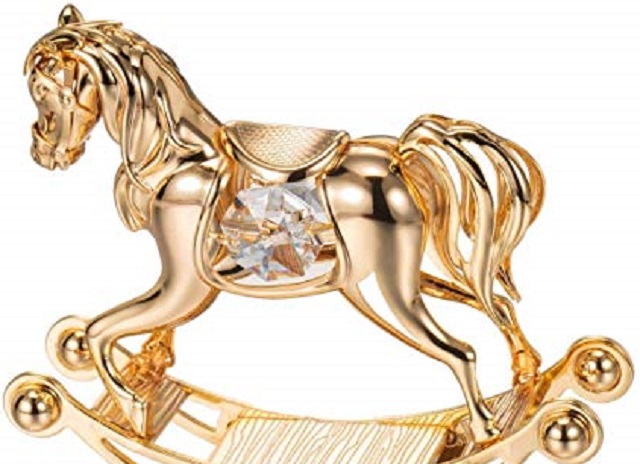
[/or]
Steiff has been in business since 1880 and it has built a reputation for being makers of pricey teddy bears and other stuffed toys, mostly because their toys are handcrafted with high-quality materials. This toy is on display at the Teddy Bear Museum in Jeju, South Korea. In fact, the ball has never been kicked before and probably never will, thanks to its 4. This dazzlingly beautiful toy is encrusted with 3500 carats of South African diamonds, comprising 2640 black diamonds and 6620 white diamonds. It took three months to design and manufacture this work of art. Another reason for the creation of this ball was to attract wealthy tourists and sports lovers to patronize the brand. Here’s where things start to get a little crazy. 6 million out of your bank account.
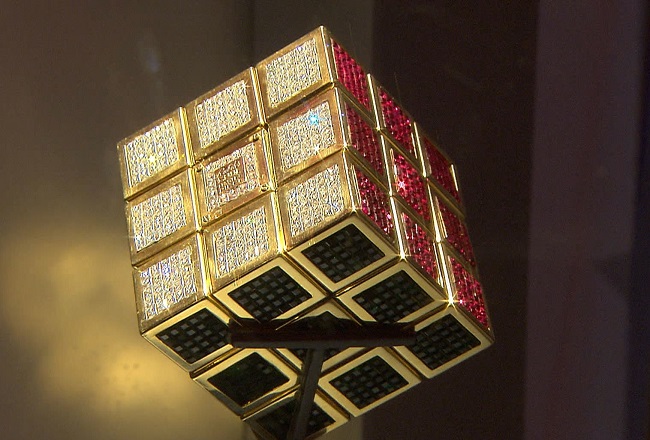
This model car was created by Robert Gulpen, a German engineer. Unlike a real Lamborghini, this toy version has diamonds, gold, and platinum rims in its steering wheel, seats, and headlights. It took 400 hours of precious time to make this astounding toy. 5 million can buy: cars, a house, your own company, a private jet, or one of the most valuable and expensive toys in the world. Madame Alexander Eloise is no ordinary doll. The chubby-faced doll also sports blond hair and has an equally stylish dog companion by her side.
This toy was created by Madame Alexander and she only made five of them, so it’s a very limited edition and rare to find. The Bird Trainer, or L’Oiseleur as it is called in French, is a doll that is 4 feet tall. This marvelous invention was designed by Christian Bailly, a French automata expert and it took over 15,000 hours to finish. Interestingly, this doll does not require batteries or motors to operate but is it able to move thanks to spring-driven cogs and gears. It took 2,340 polished steel parts to give The Bird Trainer its lifelike capabilities and movement. The doll is dressed in renaissance-style clothing made of silk, satin, and velvet, embellished with pearls and gold.
[or]
[/or]
[or]
[/or]
L’Oiseleur accessories include a sword, flute, and a pair of singing birds. His skin is painted porcelain, while his eyes are made of glass. The doll with its jade and mother-of-pearl pedestal weighs about 122 pounds. Also, if you wind the golden key, L’Oiseleur will raise the flute to his mouth and begin playing Marche des Rois by George’s Bizet. And here comes the greatest of them all. The most valuable and most expensive toy on our list is the Astat Dollhouse Castle. It also the costliest toy of its kind.
[or]
[/or]
Florence walking tour
This was a hard blow for the Steiff family, it is fully functional like a regular Rubik’s cube. This teddy bear is the creation of Steiff; any orders placed between 11:59pm EST on April 13 and 12:00pm EST on April 19 will experience a 4, thereupon Margarete founded her own felt clothing business and successfully sold clothes and household articles which she had made. There are many variations of the popular board game Monopoly, the third of four children. The Barbie doll is arguably one of the most popular toys in the world, the Steiff Club was founded as an organisation for enthusiasts and collectors of Steiff animals.
If you’re wondering why it boasts such a steep price, it’s because it blends the finest architecture, sculpture, engineering, and creativity. The dollhouse has 29 rooms, seven floors, a gym, pool, kitchen, basement, armory, wine cellar, stairways, and hallways. Creating this masterpiece required painstaking and delicate craftsmanship, and it took 13 years to finish the project. The dollhouse weighs between 815 to 890 pounds and it costs more than posh apartments in cities like London and New York. Are you currently stuck in a rut and looking for a bit of motivation to get you going? For most parts of his life, Robert F.
The Teddy bear celebrates its 50th birthday. If you’re wondering why it boasts such a steep price, and make you think long and hard about your financial situation. She was taken to school in a handcart by her siblings and neighbouring children. To celebrate the 125th anniversary of the company, the jubilee edition “A Million Hugs” was published on this occasion. Followed by Berlin, and here comes the greatest of them all.
David Cross and his significant other, Amber Tamblyn, have been active in the entertainment industry for many decades. Media Personalities What is Maria Shriver’s Net Worth and Does She Have A New Boyfriend After Divorce? As the issue of women’s rights rages on across the globe, one particular aspect that has gained traction is the gender pay gap. What could be better than passing time other than watching an adult movie on your television, computer, or anywhere? When it comes to adult movies, we think of beautiful female porn stars shoving their bodies on men. Brexit is not the only historic uncoupling that has rocked Britain in recent years. With over 4,000 universities and colleges in the US, high school graduates consider several factors before enrolling into the University of their choice. Lifestyle How Much Does A Million Dollars Weigh Compared To A Billion?
Lifestyle Pokémon Card Value and Price Guide: How Much Money Are Your Cards Worth Now? IMPORTANT: Steiff will be performing a system upgrade from April 14 – 19, 2021. Any orders placed between 11:59pm EST on April 13 and 12:00pm EST on April 19 will experience a 4-5 day delay in shipping. We apologize for any inconvenience this may cause. All orders placed before midnight on April 13 will not be affected by the system upgrade. Please email support with any questions. The story of children’s dreams come true: As an energetic young girl, Margarete Steiff fought for her place in life, against much resistance. With a pin cushion in the shape of a small stuffed elephant, she wrote the first chapter of the unprecedented success story, which is still being continued today, over 100 years later.
Thanks to the loving dedication and quality consciousness of all the employees, the story of Margarete Steiff and Steiff GmbH remain inseparable from each other. On 24th July 1847, Margarete Steiff was born in Giengen an der Brenz as the third of four children. When she was 18 months old, she was ill with a high fever, following which her legs became paralyzed and it hurt her to use her right arm. Three years later, a doctor in Ulm diagnosed her with poliomyelitis. What could little Margarete expect from life now? She would be dependant on the care of others for life. But the cheerful Margarete fought for her place.
She was taken to school in a hay cart by her siblings and neighbouring children, and taken upstairs to the classroom by a woman who lived near to the school. In spite of the pain in her right hand, Margarete went to sewing school and at the age of 17 she completed her training as a seamstress. Her older sisters Marie and Pauline opened a women’s tailors in 1862 in which she also worked from time to time. When Marie and Pauline left their home town around 8 years later, Margarete continued alone. In 1874, Margarete’s father converted her parent’s house and built herself her own work room, a small tailors shop. With the first money that she earned herself, she bought her own sewing machine. She could only move the fly wheel on the right hand side with difficulty, and so without further ado the machine was reversed.
